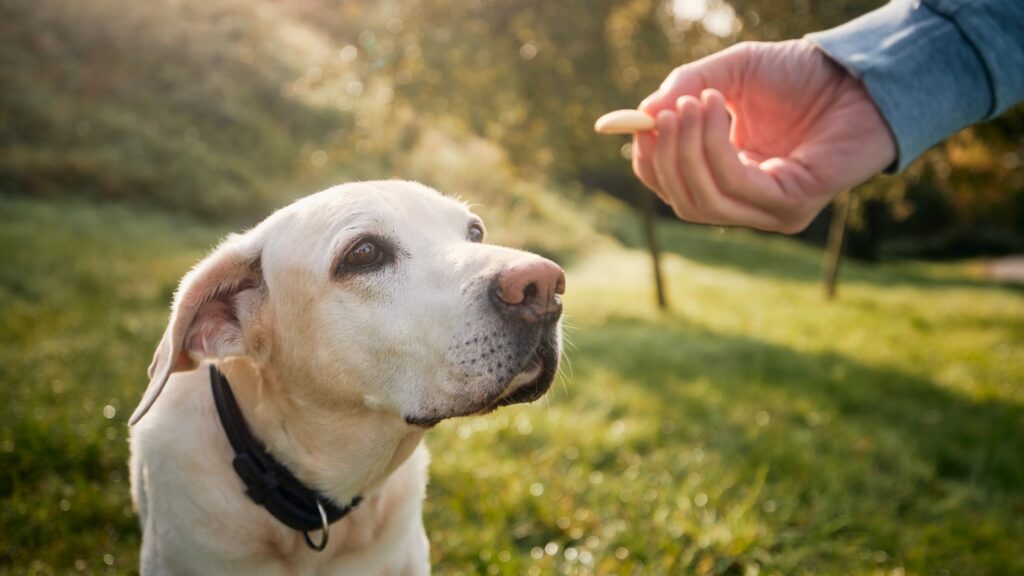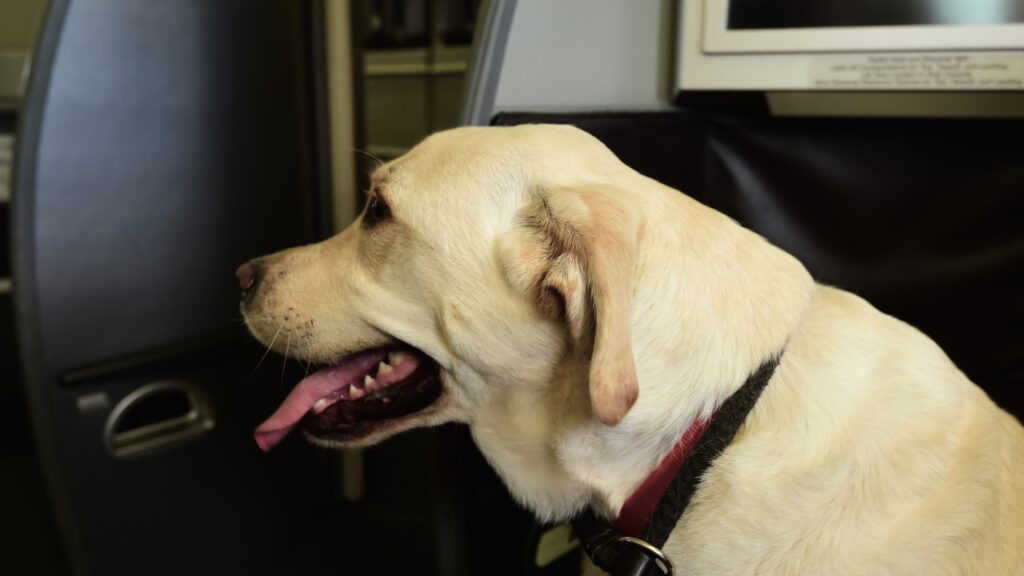If you’re reading this, you probably have a special older dog in your life and are considering taking them on a trip with you. Great idea!
Dogs are the perfect companions at any age, and bringing them along on your travels can be a fantastic experience. However, traveling with an senior dog does require some extra planning and attention.

Planning and Preparation
Before you hit the road or take to the skies, a visit to the vet is a must. Think of it as a pre-travel check-up for your dog.
Your vet can make sure your pup is healthy enough for travel and update any necessary vaccinations. Don’t forget to ask for a copy of your dog’s medical records—it’s always good to have them on hand just in case.
Comfort is Key
Older dogs, much like us, appreciate a bit more comfort. Bring along their favorite bed or blanket. This little piece of home can help ease any anxiety your dog might feel in a new environment.
If your dog has mobility issues, a ramp or portable steps can be a lifesaver for getting in and out of the car.
Pack the Essentials
Packing for your dog is a bit like packing for a toddler—there are a lot of essentials you just can’t forget.

Here’s a quick list to get you started:
- Medications: Make sure you bring enough for the entire trip plus a few extra days, just in case.
- Food and Water: Stick to their regular diet to avoid any tummy troubles. And don’t forget to pack a few gallons of water.
- Bowls and Toys: Collapsible bowls are super handy for travel. Bring along a couple of your dog’s favorite toys to keep them entertained.
Frequent Pit Stops
If you’re hitting the road, plan for frequent stops. Older dogs need to stretch their legs and take bathroom breaks more often than younger pups.
A good rule of thumb is to stop every two hours. Not only does this keep your dog comfortable, but it also gives you a chance to stretch and take in the scenery.
Finding Pet-Friendly Accommodations
When it comes to finding a place to stay, not all accommodations are created equal. Look for pet-friendly hotels that offer amenities for your dog.
Ground-floor rooms are perfect because they’re easier for older dogs to access. Some hotels even provide dog beds and treats—how cool is that?
Flying with Your Older Dog

Flying with a senior dog requires a bit more planning. Make sure to check the airline’s pet policy well in advance. Some airlines have specific requirements for older dogs, such as a health certificate from your vet.
Try to book direct flights to minimize the stress of layovers. A comfortable pet carrier that allows your dog to stand up, turn around, and lie down is a must.
Keep an Eye on Their Health
Throughout your trip, keep a close watch on your dog’s health and behavior. Look out for signs of stress, discomfort, or illness. Older dogs can be more sensitive to changes in routine and environment, so a calm and reassuring presence from you can make a big difference.
Be Prepared for Emergencies
Hopefully, you won’t need this part, but it’s always best to be prepared. Research veterinary clinics and pet hospitals along your route and at your destination. Keep a list of emergency contacts and your dog’s medical information handy.
Start Small
If your dog isn’t used to traveling, start with short trips to get them acclimated. Take them to the park, the pet store, or a friend’s house nearby.
These small outings will help your dog associate travel with positive experiences. Gradually increase the length of your trips, and soon your dog will be a seasoned traveler.
Be Organized
Traveling with a dog can be a bit challenging because you have to think about their needs in addition to your own. Make lists to ensure you pack everything your dog needs. It’s better to be over-prepared than to find yourself without something important.
Pack Medications Separately
If you and your pet are both on medications, pack them in separate locations to avoid confusion. This simple step can save you a lot of hassle when you’re rummaging through your bags looking for the right bottle.
Bring Familiar Items
Your dog might feel anxious during the trip because of the unfamiliar surroundings. Bring some familiar items like their favorite blanket or toy to make them feel more at home. Don’t forget the treats—every dog deserves a reward for good behavior!
Plan Laid-Back Trips
When traveling with an older dog, it might be best to avoid trips that involve strenuous activities like long hikes or theme parks. Instead, opt for pet-friendly destinations where you can take leisurely walks and enjoy some quiet time together.
Make Necessary Arrangements for Pet Care
If you’re planning activities that aren’t pet-friendly, arrange for pet care in advance. This way, you won’t have to scramble to find a pet sitter or daycare at the last minute.
Consider Pet-Friendly Destinations
Some places are more pet-friendly than others. Research your destination to find hotels and attractions that welcome pets. Request a ground-floor room to make it easier for your dog to go outside.
Traveling with an older dog can be a wonderful experience with the right preparation and care. Always consider your pet’s comfort and needs to ensure a stress-free and enjoyable trip for both of you. With a little extra planning, you and your senior dog can make beautiful memories together, no matter where your travels take you.
If you enjoyed this blog, don’t miss our other posts on traveling with pets:
- 10 Fun Things to Do with Your Dog in Florida
- Where to Take Your Dog in New York City
- Bringing Your Pet from the US to the Philippines – Everything You Need to Know
- Flying With Husky: Complete Travel Guide for First Timers
- 3 Famous Beaches I Visited with My Husky In California
Happy travels! 🚗🐾